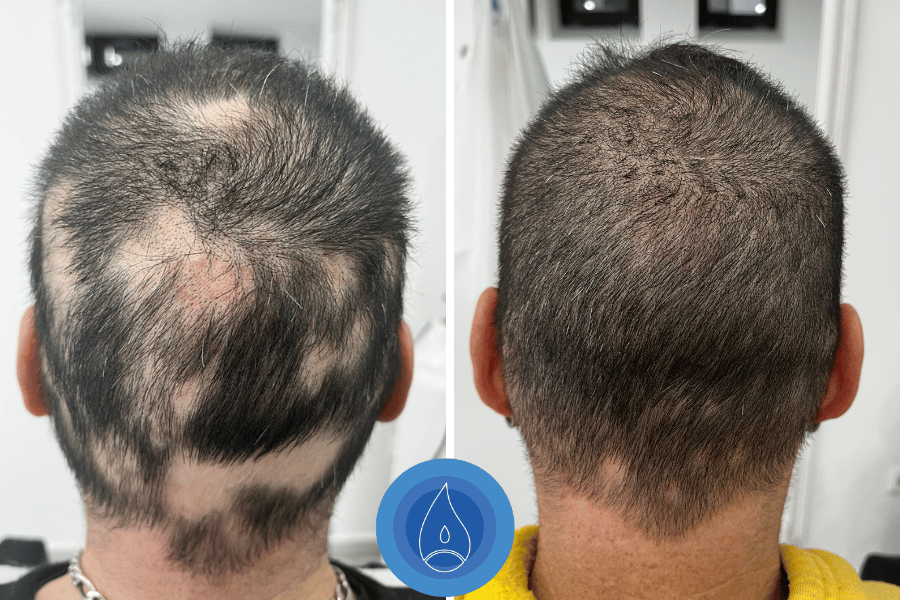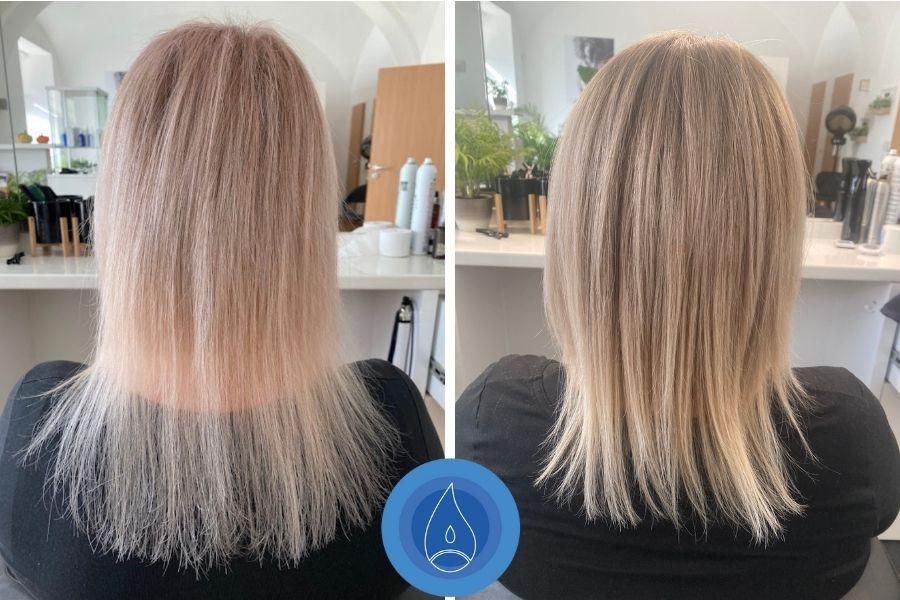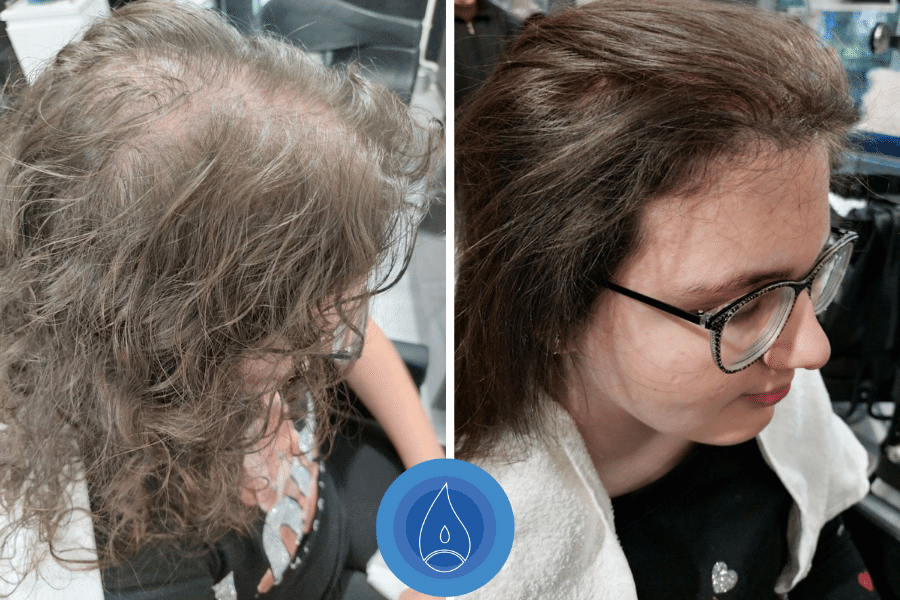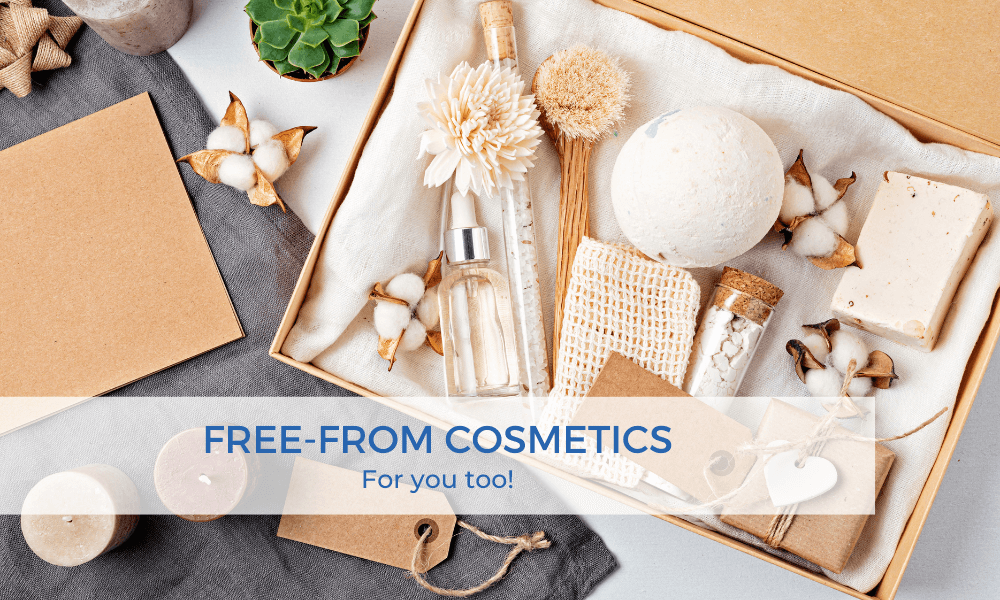
HOW TO STOP HAIR LOSS – AND PROMOTE HAIR GROWTH
Struggling with hair loss? Unsure of its cause and how to treat it? Hair loss is a complex issue that can often be both a cause and a symptom of other conditions. Any change that affects the hair and scalp can alter one’s appearance, impacting self-esteem and potentially leading to significant anxiety and personality issues. On the other hand, hair loss can be an early indicator of serious internal diseases, which is why persistent, abnormal hair loss should always be taken seriously, and it’s worth investigating the underlying cause. Read this blog to learn about treating hair loss.
hair growth guide
Do you know what healthy hair looks like? Just as skin quality varies among individuals, so do hair types. Those with fine, silky hair may wish for a voluminous hair crown, but this is usually only achievable for those with thicker, fuller hair. However, what holds true for everyone is that healthy hair is clean, shiny, glossy, and has no split or broken ends, and the scalp is not flaky.
Our hair does more than just enhance our appearance; it serves a protective function. This is most evident in the increased occurrence of sun-induced skin cancers and keratin abnormalities on bald scalps. Our hair is also a good indicator of our overall health. Conditions like anemia and stress can make the hair and nails dull and brittle, and can even lead to hair loss. Understanding the hair’s life cycle is crucial to effectively combating hair loss.
THE LIFE CYCLE of HAIR

Healthy hair grows at a rate of approximately 0.35 mm per day. Each hair strand goes through three phases: the growth phase (anagen), the transition phase (catagen), and the resting phase (telogen).
- Phase 1:
The anagen phase (growth phase) can last from two to five years. This phase typically involves 85-90% of the hair on the head. During this period, matrix cells continuously divide, causing the hair to grow about one-third of a millimeter per day.
- Phase 2:
The catagen phase (transition phase) is the time during which hair follicles shrink and lasts about two to four weeks. In this phase, matrix cell division stops, the hair strand detaches from the papilla, and moves outward toward the follicle opening.
- Phase 3:
The telogen phase (resting phase) lasts about three to nine months. At the end of this phase, the hair falls out. During this period, the hair strand is held only by the follicle’s epidermis, which gradually breaks down, causing the hair to shed as a bulbous-ended strand. Meanwhile, deep inside the follicle, matrix cell division resumes, and a new hair strand begins to grow.
Fortunately, the new hair growth process does not occur all at once (imagine if we periodically went bald before regrowing our hair). Instead, it is a non-simultaneous, staggered process, where approximately 95% of hair strands are in the growth phase, and 5-10% are in the resting phase.
It is a natural physiological phenomenon for a certain amount of hair to fall out daily. If this does not exceed about 100 strands per day, it is considered normal hair loss. However, if more than this amount falls out regularly for over two months, a more serious problem is likely present. There are two types of hair loss: normal and abnormal hair loss. Normal hair loss can be triggered by various life situations such as exam periods, pregnancy, dieting, or menstrual cycles.
TYPES OF HAIR LOSS
Hair loss is a common problem among both men and women. To assess its extent and type, the entire scalp must be examined. In the case of hair loss, it is important for a trichologist to determine which types of hair strands are shedding the most.
ALOPECIA AREATA
Alopecia areata is a disorder that causes hair to fall out in patches on the scalp or body, significantly affecting people’s quality of life. It is an autoimmune condition where the body’s immune system mistakenly attacks hair follicles. This type of alopecia affects both genders across all age groups and ethnicities. Hair loss typically begins with small, round, smooth bald patches on the scalp. This patchy hair loss can continue, and in some cases, lead to complete hair loss (alopecia totalis), although this is not common.
This condition is very common, typically occurring in young adults and often in children, affecting both genders equally. In the vast majority of cases, it affects the scalp, but it can also occur in other hairy areas, such as the beard. Generally, one or more round or oval bald patches are visible, there’s no visible irritation (mild redness may occur), and there is no skin atrophy.
DIFFUSE ALOPECIA
In diffuse alopecia, the hair’s life cycle phases shorten, moving from the growth phase to the resting phase too quickly, followed shortly by the shedding phase. This type of hair loss can be triggered by stress, illnesses, or even after a COVID infection. Diffuse alopecia is a broad term encompassing various conditions associated with telogen hair loss. Hair loss is spread over the entire scalp, and the speed of onset mainly depends on the number of hairs entering the telogen phase and falling out. The scalp is usually reaction-free, meaning there is no redness, scaling, itching, or atrophy. Several conditions fall under this category.
ANDROGENIC ALOPECIA
In men, hair typically thins in an “M” pattern, beginning with thinning at the temples and crown, resulting in a receding hairline. For some men, this progresses until most or all of the hair is gone. This loss can start as early as puberty, although it is more commonly seen in adulthood. This is the most common type of hair loss, affecting both men and women. It is a dominantly inherited condition, appearing in the second decade in men and the third decade in women. The exact mechanism of its development is unknown but is likely related to genetic differences in the local metabolism of male sex hormones (androgens).
CAUSES OF HAIR LOSS
Hair disorders often have complex underlying causes. Rarely is hair loss caused by a single problem; typically, four to five factors may contribute to the development of the condition. Let’s explore the factors behind hair loss.

INTOLERANCES
Nowadays, food intolerance is extremely common, primarily due to impaired gut health. We constantly damage our intestines with foods high in anti-nutrients. Despite being aware of existing food intolerances/allergies, we still struggle with symptoms such as inability to lose weight, bloating, severe hair loss, dry and damaged skin, acne, rosacea, eczema, and quickly aging skin.
Hair loss can be indicative of an autoimmune disease rooted in the gastrointestinal tract. Like all other autoimmune diseases, it indicates that our immune system is damaged and needs healing. Food intolerances can cause inflammation of the hair follicles in the scalp, leading to hair loss. They can also trigger skin conditions such as acne, eczema, aging skin, psoriasis, and rosacea. The most common triggers for intolerances are wheat products, milk, and dairy products. Inflammation can be reduced, and the body’s optimal health level can be supported with proper examination and dietary changes.
Diet plays a crucial role in the condition of our scalp. It is advisable to avoid any foods that you are intolerant to. Continuing to consume these foods can cause inflammation in the body and disrupt the absorption of vitamins and nutrients, complicating metabolic processes and digestion.
IRON AND ZINC DEFICIENCY
The majority of women who consult a doctor due to diffuse telogen effluvium (increased, general hair loss during the resting phase) are found to have iron deficiency, with or without anemia. It is believed that iron deficiency reduces stored and tissue iron levels long before anemia manifests. Since hair growth is an oxygen-intensive process, iron deficiency, which plays a crucial role in oxygen transport, can impair hair follicle function. Zinc deficiency can be congenital, involving zinc absorption insufficiency, or acquired, where a zinc-poor diet leads to baldness. Zinc is essential for the metabolism of rapidly dividing cells.
OXIDATIVE STRESS
Oxidative stress is the most potent degenerative process in living cells. It is responsible for aging, neurological damage, joint diseases, and inflammation. Reducing oxidative stress in cells can slow aging. Oxidative stress weakens the immune system, damages DNA, and ultimately leads to cell death. There is virtually no disease where the damaging effects of free radicals have not been demonstrated. Factors that promote free radical formation include recreational substances, cigarette smoking, alcohol, strong UV radiation, ozone, smog, various toxic substances in food and the environment, the intake of polyunsaturated fatty acids (e.g., margarine, animal fats, hard cheeses, meat), and excessive sugar consumption.
LIFESTYLE
Overall, an improper diet is a key factor affecting hair growth and impacts not only the scalp but also the healthy functioning of our immune system. Diets high in fat, sugar, salt, and animal protein damage the kidneys, create acidic blood, deplete the body’s nutrients, elevate hormone levels, affect stress tolerance, and are fundamentally detrimental to the body. Low levels of zinc, iron, protein, and omega-3 fatty acids are often associated with hair loss. Nutrient deficiencies can trigger various scalp conditions. Vitamin deficiencies are significant factors in hair loss, slow hair growth, and poor hair quality.
GENETICS, HEREDITY
The functioning of our cells greatly depends on our genetic heritage. While genetics is always a background factor, it is a misconception that only genetics determine the condition of our scalp and hair. We do not necessarily inherit hair loss but rather a predisposition to certain intolerances, which eventually lead to baldness. This is true for all hereditary hair or dermatological diseases and other conditions. Negative patterns or bad habits learned from family examples also pose problems. A sedentary lifestyle, improper dietary habits, unmanaged stress, and many other factors are linked to scalp diseases.
WRONG PRODUCT
Many people do not realize that the most common scalp problems are self-inflicted, primarily due to the use of inappropriate hair care products. An unsuitable hair care routine can lead to significant hair loss. Many still burden their skin and body with chemicals and are puzzled by hair loss, excessive oiliness, dryness, or an itchy scalp. It is important to avoid buying the first product on the shelf with a nice package or fragrance, as they may contain harmful ingredients.
Hair loss can be caused by an improper hair care routine (use of chemicals, frequent dyeing, improper drying and styling, and use of inappropriate styling products). External factors such as unprofessional hair dyeing, use of unsuitable hair care products, incorrect chemical treatments, perms, mechanical damage, strong shampoos, hair sprays, hot air from hairdryers, and frequent washing that removes sebum and moisture from the hair also damage and dry out the hair. Strive to use products rich in 100% natural ingredients and avoid chemicals.
MEDICATIONS
Unfortunately, hair loss often occurs as a side effect of many medications. However, underlying inflammatory processes in the body, such as tooth or gum inflammation, can also contribute to hair loss. During a trichology examination, the trichologist will inquire about the medications you are taking, when you last had a blood test, what the results were, and whether you have recently undergone any serious illnesses. Due to diseases and medical treatments, significant hair loss can also occur as a result of inflammation and a weakened immune system.
PAY ATTENTION TO THESE!

PROTEINS
Amino acid deficiency can most commonly arise from inadequate nutrition, but many other factors can also be at play (increased protein usage, infectious diseases, stress, old age, etc.). One of the most important amino acids for our hair is the sulfur-containing cysteine, which is found in eggs, meat, and dairy products.
VITAMINS
Vitamin A is one of the oldest known fat-soluble vitamins. Retinoids, which are derived from vitamin A, are essential for our vision, as well as the health of our skin and hair, and a range of vital processes (integrity of mucous membranes, immune system function, growth, bone and tooth structure, etc.). The main natural sources of vitamin A are fish, egg yolk, liver, and milk. Carotenoids, necessary for the production of vitamin A in our body, are found in the largest amounts in yellow, orange, and red vegetables and fruits, as well as kale and broccoli.
From the B vitamins group, biotin is the most important for our hair and skin. Biotin is found in a wide variety of foods, so its deficiency is rare. If it does occur, it can lead to brittle nails and hair loss. Most of the biotin we get from food, and a smaller portion is produced by bacteria in the intestines.
Vitamin C is a water-soluble, antioxidant vitamin. Its main effects include strengthening the walls of capillaries and being a component of connective tissue fibers (collagen fibers) found in the second layer of the skin (the dermis), as well as aiding in the absorption of iron. Additionally, it has many other extremely important effects.
Vitamin E is a fat-soluble vitamin with antioxidant properties (i.e., it inhibits harmful oxidation in certain biochemical processes), which also plays an important role in the formation and maintenance of healthy hair and nails. It is stored in the liver and adipose tissue. The main natural sources are nuts, olive oil, and wheat germ.
MINERALS
Zinc is one of the essential minerals that every cell in our body needs. Apart from maintaining healthy skin and hair, it plays a role in immune system function, hormone regulation, promotes wound healing, and is effective in treating certain skin conditions. Severe deficiency is fortunately rare, but mild deficiency can lead to hair loss, delayed wound healing, increased susceptibility to infectious diseases, and dry, cracked, flaky skin. Common natural sources include meat, eggs, cheese, seafood, peanuts, and almonds.
Selenium is an antioxidant mineral that is also necessary for maintaining healthy hair and nails. Its numerous beneficial effects are primarily due to its antioxidant properties and its role as an essential component of enzymes involved in many important processes. Deficiency can lead to hair loss, brittle nails, increased susceptibility to immune system diseases, and during pregnancy, fetal developmental abnormalities. The main natural sources are seafood, meats, and brown rice.
Iron is one of our most important minerals, essential for the formation of the oxygen-carrying protein in blood, hemoglobin, as well as for the functioning of several enzymes and the immune system. Iron is supplied to the body through food, and its absorption and storage are quite complex processes. Deficiency can occur due to inadequate intake, increased blood loss, pregnancy, or dieting. Iron deficiency anemia can lead to weakness, fatigue, and hair loss. The main natural sources of iron are liver, beef, legumes, spinach, Swiss chard, lettuce, dried fruits, and beer (yeast).
TREAT HAIR LOSS WITH THE RIGHT PRODUCTS
Your hair and skincare routine matter. For lasting recovery, using chemical-free and 100% natural products provides a long-term solution. Hair loss can be caused by hair care products containing strong chemicals. It’s important to focus on prevention by practicing proper hygiene. Nourish your scalp with appropriate, natural products.
If you’re frustrated with most products on the market that are packed with chemicals and only offer short-term results, then try Oxygeni Hair Products Here! Each product contains carefully selected ingredients, sparing the scalp and hair from artificial, harmful substances, and providing a long-term solution. The Hair Loss product line is professionally developed to help fight hair loss with natural ingredients.
HAIR LOSS SHAMPOO
If you have been searching for a shampoo that helps treat your hair loss, you’re in the right place! Hair Loss Shampoo, with its panthenol, maca root extract, and coconut glucoside content, stimulates hair growth, prevents hair loss, and improves scalp condition. By stimulating collagen synthesis, it provides valuable firming and tightening benefits for the skin. Thanks to coconut oil, it strengthens hair roots and prevents hair breakage. It helps combat hair loss, whether it’s genetic, androgenic, diffuse, or patchy hair loss. It enriches the scalp with vitamins and valuable minerals, resulting in thicker and fuller hair.
This gentle, toxin-free, cleansing and nurturing gel shampoo effectively removes hair styling products, oils, and fats from the hair. It’s a sulfate-free shampoo recommended for all hair types, especially thinning, weak, and lifeless hair, normal, or inflexible scalp. After a few weeks of use, it significantly improves scalp elasticity, enhances scalp circulation, and helps restore hydration. It thickens hair strands, textures hair fibers, and increases hair volume without weighing down the hair. It prevents and can halt hair loss, strengthens hair collagen structure, protects hair follicles, and promotes hair growth through keratin synthesis.

ACTIVE INGREDIENTS
Baicapil is a combination of three plant-based active ingredients aimed at increasing hair density, reducing hair loss, and stimulating hair growth. It activates the hair growth cycle and prolongs the time spent in the hair growth phase (before entering the resting phase and falling out). After just a 3-month course of using a shampoo and hair mask containing Baicapil, hair loss can be reduced by up to 60.6%.
Maca root contains significant amounts of vitamins and minerals, such as vitamin C, iron, vitamin B6, potassium, and manganese. It protects the skin by helping to shield it from UV radiation (preventing the formation of burnt cells). Additionally, it enhances the production of antioxidants in the body, which help combat aging-accelerating free radicals. It stimulates the scalp, thereby increasing the amount of nutrients reaching the hair follicles. Consequently, nurturing the hair follicles improves hair thickness and strength. Maca root strengthens hair strands, reducing the risk of breakage and hair loss.
Panthenol is a desirable skincare and haircare ingredient because it acts as a moisture binder, absorbing moisture. It acts as a skin softener, smoothing out rough skin and hair. Panthenol is converted into vitamin B5 in the body, which has anti-inflammatory properties and promotes the healing process of damaged hair. In a study on thinning hair treatment, panthenol has shown promising results in reducing the effects of hair thinning, and D-panthenol has demonstrated increased cell viability, which stimulates hair growth.
Coconut glucoside is considered gentle, with a low risk of skin irritation. It is unique in its excellent ability to create and maintain foam. Technically classified as a sulfate, it comes from coconut, and it is not considered carcinogenic, making it a safe alternative to sulfate-containing cleansers derived from petroleum, such as sodium lauryl sulfate. It is often used in baby shampoos and shampoos for those suffering from scalp irritation. Coconut glucoside can cleanse the scalp and hair of impurities and excess oil without the risk of irritation caused by other cleansers containing harsh sulfates.
HOW TO USE THE HAIR LOSS SHAMPOO?
In an applicator, dilute 10-25 ml of shampoo (depending on hair length) suitable for hair type and scalp condition with 50-100 ml of water (depending on hair length) and evenly distribute it on the scalp. Mix enough quantity for two washes and use it twice in a row.
Recommended for genetic and androgenic hair loss, diffuse or patchy hair loss, and weak, thinning, lifeless hair. It is excellent for thin, flat hair, as well as for vitamin- and mineral-deficient scalp and hair. The hair loss shampoo also combats aging-graying hair.
HAIR LOSS MASK
Did you know that baicapil can increase hair density by up to 59.3% significantly increasing hair mass and improving quality, while also reducing hair loss? Can you guess what the main ingredient of the Hair Loss Mask is? Well, of course, it’s baicapil! The hair loss mask containing maca root extract, panthenol, and vitamin B5 strengthens weak, thinning hair. The active ingredients contribute to hair growth, reduce tissue inflammation, accelerate lipid metabolism, and strengthen collagen fibers. The mask’s vitamin and mineral content is deeply absorbed into the scalp, making it applicable not only to the hair ends but also to the scalp. Using a shower cap helps the active ingredients penetrate deeper.
The hair loss mask is a beneficial oil-rich treatment. Argan oil with its various nutrients promotes faster hair growth, while jojoba oil contributes to reducing hair loss. Rosemary oil effectively strengthens hair follicles, helps stop hair loss, and can enhance hair growth. Flaxseed oil is ideal for enriching the hair crown with its valuable nutrients, stimulating hair growth, strengthening strands, and making them resistant to external damage.
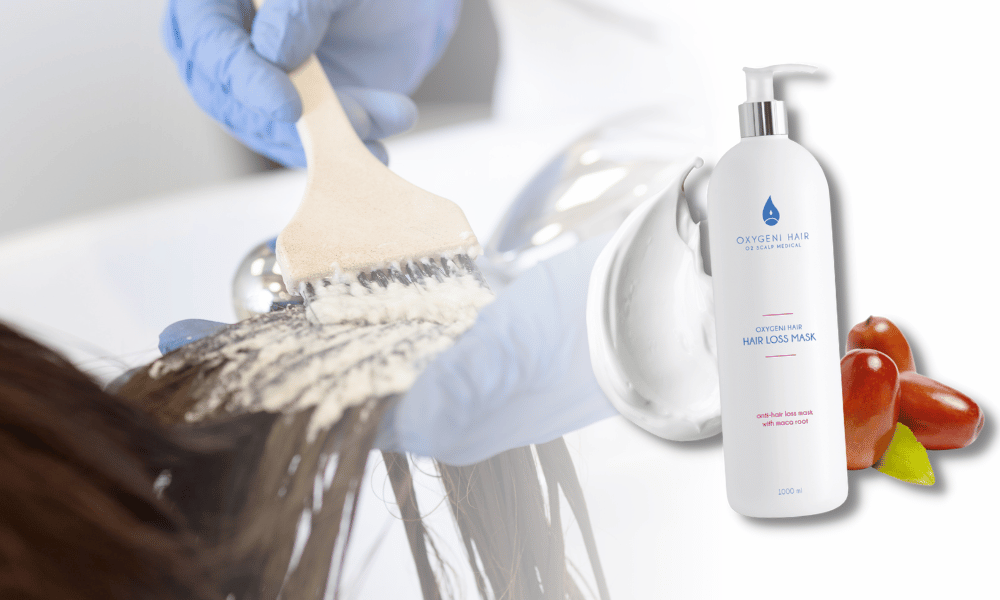
ACTIVE INGREDIENTS
Baicapil helps reduce excessive hair loss by targeting aging and dormant hair follicles. Its primary goal is to nourish and maintain healthy follicles, preventing hair strands from becoming weak. Additionally, it prevents extensive hair loss by working on the hair roots and expanding cell digestion to slow down the process of hair loss. It strengthens the hair by activating hair follicles, providing sufficient nourishment and oxygen supply. Baicapil strengthens the hair from the roots to the ends, depending on how it is applied.
Jojoba oil is moisturizing and packed with vitamins and minerals that benefit hair health. It soothes the scalp, restores split ends, and regulates dandruff. Jojoba oil not only moisturizes the hair but also dissolves impurities and deposits accumulated on the scalp, promoting nourishment of the hair follicles and boosting healthy hair growth. Part of its scalp-cleansing effect is due to its ability to dissolve sebum deposits that can block follicles.
Argan oil originates from the kernels of the argan tree and can be used in the kitchen or for cosmetic purposes. The oil is found in its pure form and can be applied locally to the skin, nails, and hair for hydration and nourishment due to its many beauty benefits. It moisturizes, adds shine, protects the hair, shields against split ends, and increases elasticity. The E-vitamin found in it is crucial for the health of the hair, as its rich antioxidant properties help neutralize free radicals and other elements causing hair damage.
Rosemary is an herb used for treating various ailments, including skin irritation and hair loss. Rosemary oil is believed to have strong anti-inflammatory properties that promote healing of the skin and scalp. It prevents hair loss by reducing breakage and enhancing the scalp’s condition. It can help address issues caused by dandruff, due to its antibacterial and antifungal properties. It may boost hair growth if fungal or bacterial issues are causing loss or damage.
HOW TO USE THE HAIR LOSS MASK?
After rinsing off the shampoo, apply 10-20 ml (depending on hair length) of the mask (suitable for your hair type and scalp condition) to your hair and evenly distribute it along the entire length. Apply a walnut-sized amount to the scalp as needed, massage it in, leave it on for 5-10 minutes, then rinse thoroughly. The active ingredients for combating hair loss are maximally effective when massaged into the scalp; if your hair tends to get greasy, leave it on for 3-5 minutes then rinse off. Depending on your scalp condition, you can add H2O Thermal, Tonic, Aloe Vera Gel, or Pure Aloe Vera and Oils to the hair masks. For extra hair regeneration, apply a larger amount of the mix to your hair, distribute it evenly, and leave it on for 10-30 minutes.
The Hair Loss Mask is designed for hair loss treatment, and for weak, thinning, flat hair, and vitamin and mineral-deficient scalp.
VITAMIN SERUM
The Vitamin Serum contains vitamins and minerals that promote hair growth and contribute to maintaining skin beauty. Vitamin E and linoleic acid found in grapes give strength and vitality to hair follicles, making them stronger and healthier. Additionally, the natural antioxidants found in grapes stimulate scalp circulation, promoting hair growth. One of the main benefits of allantoin is that its keratolytic properties can treat or prevent dry and itchy scalp by conditioning and nourishing it. Its anti-irritant properties reduce redness, soothe, and refresh the scalp. Furthermore, allantoin improves the softness and elasticity of the hair while adding shine.
Rich in nutrients such as calcium, iron, magnesium, zinc, and vitamins A, K, and E, it is effective against inflammations and general skin irritations. Due to its very high vitamin E content, it acts as a skin softener, binding moisture and providing excellent hydration for the skin. Omega-6 found in sunflower oil helps in cell development and in treating disorders such as eczema, rosacea, acne, and scarring.

ACTIVE INGREDIENTS
Hyaluronic acid is a substance naturally found in the body, although it can also be synthetically produced. As a moisturizer, it can retain moisture and binds approximately 1000 times its weight in water. Hyaluronic acid can promote healthy hair growth. It not only benefits the hair strands but also has a beneficial effect on the scalp. Moisturizing molecules attract and retain moisture in the skin, allowing collagen to flourish in the skin and scalp.
Niacin increases blood flow to the hair follicles to promote growth, improves follicle cell health, and preserves the shine, body, and strength of the hair. It has anti-inflammatory and moisturizing properties. Niacin supports a healthy scalp by balancing moisture and creating a protective barrier that enables healthy hair growth.
B-vitamins promote hair growth by promoting healthy cell renewal through abundant red blood cells, which naturally support the hair follicles. This promotes continuous and sometimes faster hair growth. It improves skin texture and moisture retention.It helps reduce the appearance of fine lines and wrinkles by boosting skin moisture. B-vitamins help even out skin tone and reduce aging dark spots.
HOW TO USE THE VITAMIN SERUM?
Oils and serums should always be applied with a carrier agent to the desired area. The carrier agent helps the product penetrate deeper layers of the skin and absorb more quickly. Using a carrier agent avoids the sticky, oily residue on the skin. The Pure Aloe Vera and Aloe Vera Gel products serve as perfect carrier agents for oils and serums. They have the widest range of use in skincare, offering solutions for every skin problem!
Against hair loss or promoting hair growth, mix 20 ml of Pure Aloe Vera with 1 dropper of Vitamin Serum and apply it to your scalp. For more effective results, massage the mixture thoroughly into your scalp with the help of our scalp massaging brush (Scalp Brush). Enhanced blood circulation in the scalp helps deliver necessary nutrients to the hair follicles. By regularly using the brush, you can prevent or treat hair loss and accelerate hair growth.
Choose our exclusive bundles to get more for less!

Additional bundle for Hair Loss
Click here to get the hair loss kit!

Anti-Hair Loss Bundle
Click here to get the hair loss kit!

Complex bundle against Hair Loss
Click here to get the hair loss kit!
try OXYGEN THERAPY AGAINST HAIR LOSS
If your hair and scalp problems don’t improve with the use of chemical-free products and lifestyle changes, it’s worth consulting a professional! What treatment can help? Oxygen therapy treatment revitalizes hair follicles through proper oxygen, vitamin, and mineral supply, strengthening them and thickening hair strands. The scalp is cleansed of impurities and regains its proper pH value. Oxygen therapy can be used for any hair and scalp problem and reduces healing and regeneration time.
Oxygen therapy is based on strengthening the immune system of the skin and scalp, making it applicable to any scalp and hair care problem, ensuring remarkable results. The treatment is 100% reliable and risk-free, based entirely on natural ingredients. Hair follicles receive proper oxygen, vitamin, and mineral supply, revitalizing and thickening hair strands, while the scalp is cleansed of impurities and regains its proper pH value.
We’ve helped numerous guests overcome hair loss and restore their hair crowns with oxygen therapy and Oxygeni products. If you’re experiencing hair loss, don’t hesitate to reach out and ask for advice from our experts!
OXYGEN THERAPY RESULTS
WHAT DO CELEBRITIES DO AGAINST HAIR LOSS?
It’s no secret that celebrities are under immense pressure to look flawless. So, when they suffer from hair loss, they feel the need to hide it from the world. But the truth is, hair loss is a very common problem, and even celebrities are not immune to it. Just like everyday people, celebrities can experience thinning and hair loss due to various reasons, from stress to malnutrition the causes are endless. And although we don’t always see it, hair loss can severely damage a celebrity’s confidence.
Priyanka Chopra allegedly avoids using hot water when washing her hair. Even when shampooing with warm water, she always rinses off the conditioner with cold water as it seals the cuticle and adds extra shine to her crowning glory.
After years of harsh treatment with extensions, Naomi Campbell allegedly experienced significant hair loss. Since then, Campbell has become more cautious with her hair, resulting in most of her bald spots regrowing. “I take better care of my hair now because I lost it all with extensions.”
It’s no secret that Tyra Banks dabbles in many different ventures, so her stress level could be high. The model-turned-entrepreneur suffered from alopecia. Under stress, the body’s immune system essentially targets the hair follicles, leading to hair loss. Since then, she has tried to avoid stress and focus more on inner peace.
Jen Atkin, the hairstylist to the most popular stars, also revealed that supplements dramatically improve the situation, especially for regularly heat-styled hair. Boosting vitamins ensures scalp health, allowing for faster, thicker, and healthier growth, addressing issues like oily scalp, hair thinning, and dry strands.
OXYGEN THERAPY AND OXYGENI HAIR PRODUCT REVIEWS







Follow us on our social media platforms!










